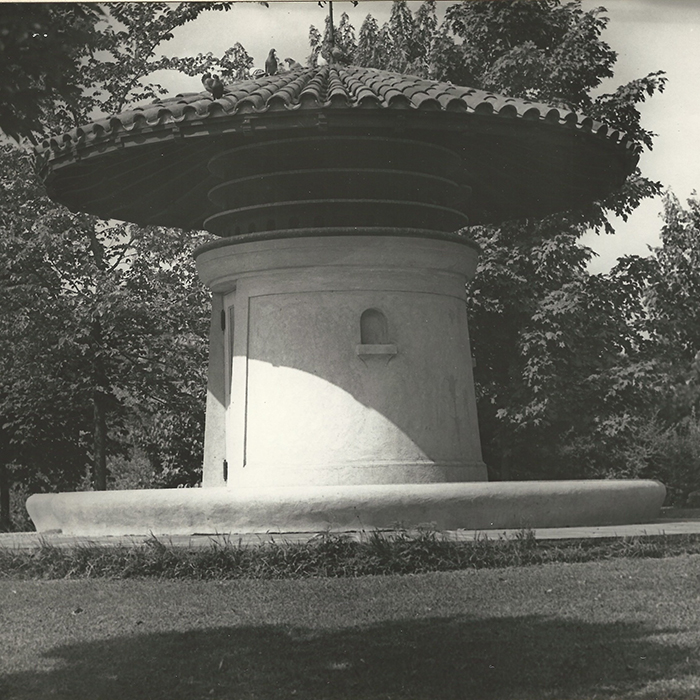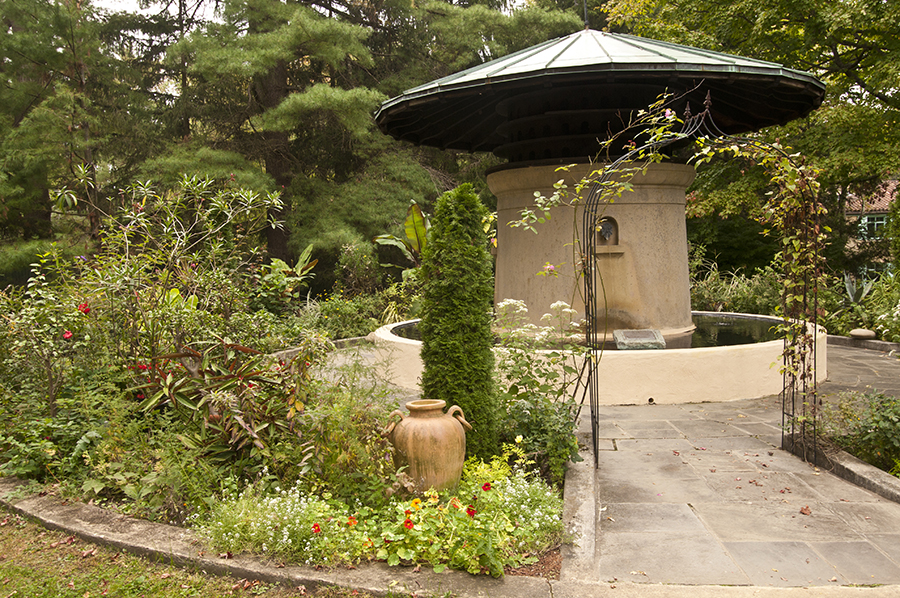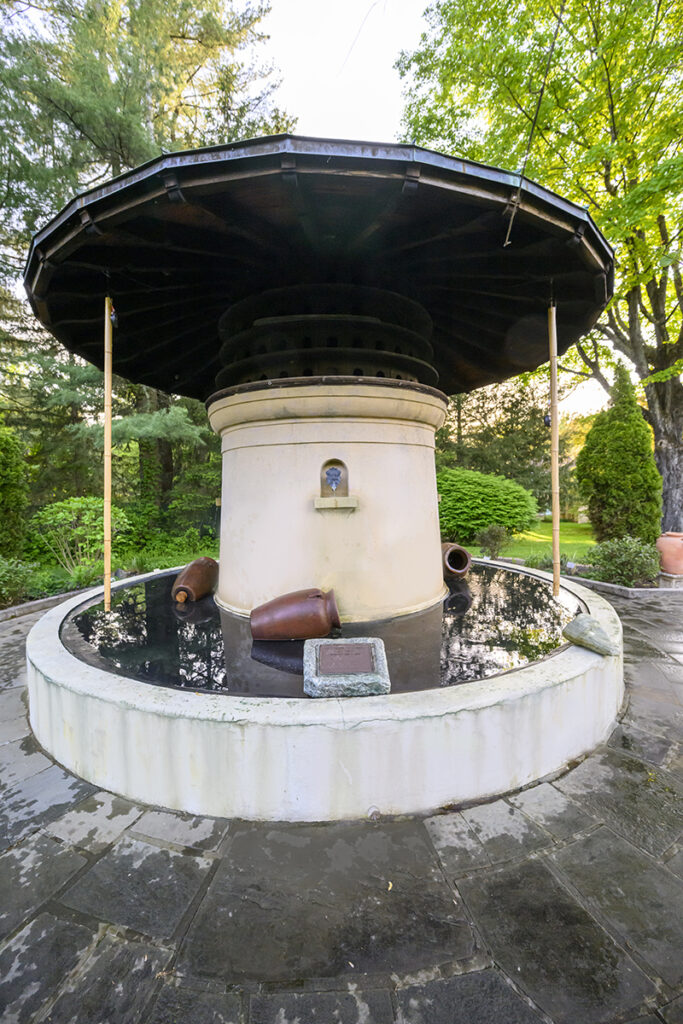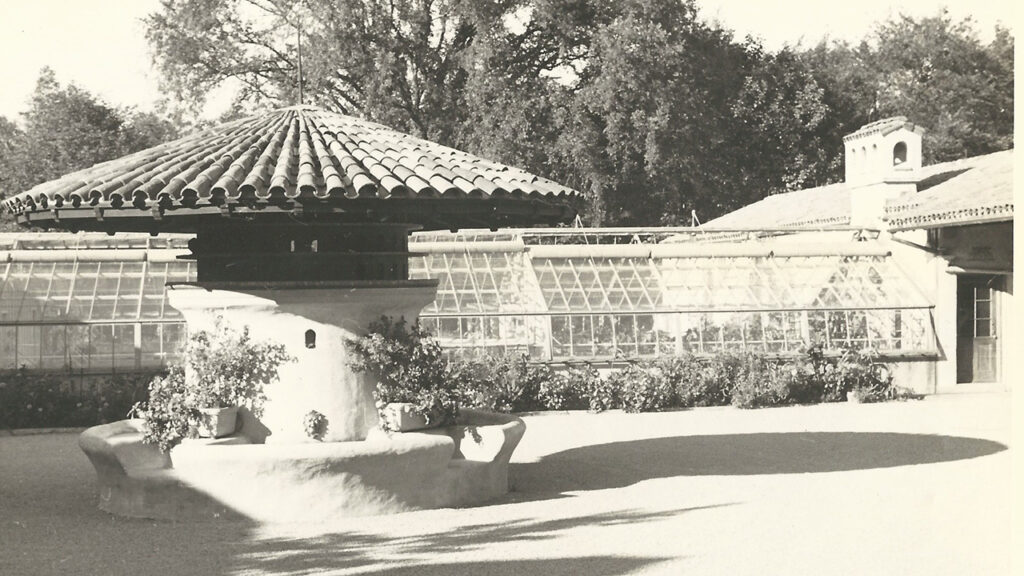On June 4, 2023, all visitors will be welcome to experience Sonic Innovations at Caramoor, including Liz Phillips’ new work Dyning in the Dovecote which will debut at Soundscapes, a free community event. The central feature of Phillips’ piece is a round stucco structure with a conical wooden roof. This structure was once in the center of the Spanish Courtyard, as a sort of avian apartment building.

After the Rosens bought Caramoor in 1929, they had a small group of buildings constructed: a stable, greenhouse, garage, and a two-story caretakers’ dwelling. This “farm group” was built around a central courtyard and, as Walter Rosen described in a letter to his sister, Jeanne Magre: “In the centre [sic] of the court will be a dovecote and there will be four large shade trees at appropriate places… which should make it attractive to sit there.” Early photos show the new cote just as Walter planned.
Historically dovecotes like this provided shelter for winged livestock, doves, or pigeons, in Europe and the Middle East. There is no documentation (yet!) that Walter and Lucie’s dovecote ever housed a flock of pigeons, however. By 1937, with plans for the “farm group” to be reimagined as a family home for the Rosens, the dovecote had to go. It was lifted onto a truck and moved to its new location.
Arthur Powell of design firm Powell & Playford wrote to Lucie Rosen in October to let her know “the dove cote [sic] has been successfully moved to a spot immediately on a line with the centre [sic] of the south windows of your Music room [sic] about 50′ out in front of the gate leading to the cow pasture. It is even more charming than before and I am sure you will be delighted with it, also that the bird bath around the base will attract many of our rather shy feathered and furred friends.”
The dovecote had a new lease on life in the late 1980s when it became the focal point of the Sense Circle, a garden designed by Catherine Ziegler, especially for those who are blind or partially sighted. The garden featured five concentric circles of different hardscape materials and plantings emanating from the cote. The circles are the fountain basin, the paved walk, the flowerbeds, the grass, and the hedges at the perimeter. Ziegler selected the bed plantings of coneflowers, coral honeysuckle, rudbeckia, and others for their scent, texture, or taste—characteristics that did not have to be seen to be enjoyed. In 1990, the Sense Circle was dedicated in honor of Marjorie Carr Adams, an advocate for education for blind and visually impaired people.


Now, Liz Philips has added another chapter to the dovecote’s history. Her installation includes wired hanging bamboo poles and terracotta urns. These both function as speakers and radiate etherwaves, meaning the sound of the piece will change depending upon how the visitors interact with the piece, where they stand, for example. Light conditions also affect the sounds, which include water, insects, dove calls and birdwings. For those strolling by, it may be hard to distinguish what is coming from Philips’s piece and what is emanating from the fountain or living creatures in the trees nearby. This new piece of sound art connects with the history of the structure at its center, and to all the dovecote’s past iterations in the landscape at Caramoor.

Leave a Reply